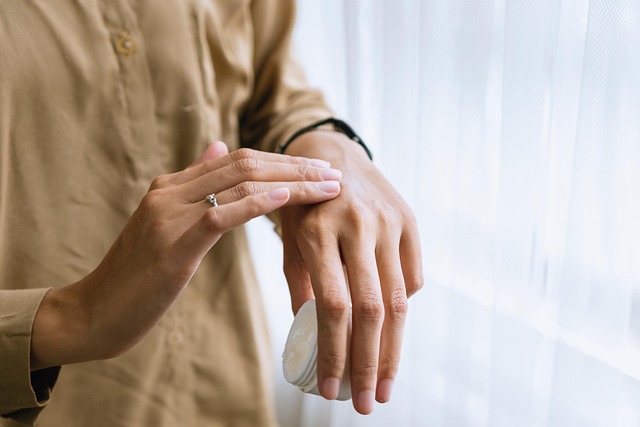Safe Application Practices for Protecting Pets from External Parasites
External parasites such as fleas and ticks can cause discomfort, skin irritation, and health problems for pets and households. Applying treatments safely reduces risk to animals and people while improving control of infestation. This article outlines practical, evidence-informed steps for safe application, consistent homecare, and when to consult a veterinarian.

This article explains clear and practical practices for applying flea and tick treatments to protect pets while minimizing risks to animals and people. It covers how parasites affect skin and behavior, how to recognize bites and signs of infestation, safe use of collars, topicals, and shampoos, and the role of hygiene and seasonal routines in long-term prevention.
This article is for informational purposes only and should not be considered medical advice. Please consult a qualified healthcare professional for personalized guidance and treatment.
How do parasites affect pets’ skin and cause itching?
External parasites like fleas and ticks feed on blood and irritate the skin, often producing localized redness, raised bumps, and intense itching. Repeated bites can lead to secondary infections, hair loss, and allergic dermatitis in sensitive pets. Owners may notice frequent scratching, licking, or chewing at specific areas such as the tail base, groin, and behind the ears.
Managing the immediate skin response includes gentle inspection and cleaning of affected areas, and avoiding over-the-counter human remedies that can irritate animal skin. A veterinarian can recommend appropriate topical agents or oral medications tailored to the pet’s species, weight, age, and medical history.
What are signs of infestation, bites, and when to contact a vet?
Signs of infestation include visible fleas or flea dirt (small dark specks), live ticks attached to the skin, consistent scratching, patchy hair loss, and small red bite marks. Behavioral changes such as restlessness, loss of appetite, or lethargy may also indicate a heavier infestation or infection. In multi-pet households, watch for spread between animals.
Contact a veterinarian promptly if your pet shows extensive skin damage, signs of infection (pus, swelling, heat), worsening itching despite treatment, evidence of anemia in young or small animals, or if you suspect vector-borne diseases. A professional exam ensures correct diagnosis and safe, effective treatment planning.
What prevention and control measures work seasonally and in homecare?
Seasonal patterns affect parasite prevalence: fleas and ticks are more active in warm, humid months in many regions, but indoor heating and microclimates can allow year-round activity. Integrate routine checks, regular vacuuming, and laundering of bedding as part of homecare. Treat all pets in a household consistently to reduce the chance of re-infestation.
Prevention includes maintaining trimmed lawns and limiting exposure to wildlife or dense brush where ticks thrive. For indoor environments, steam-clean carpets periodically and wash soft furnishings that pets use. Use “local services” such as professional groomers or pest control providers when infestations are extensive and require coordinated intervention.
Safe application practices for collars and topical treatments
Read and follow manufacturer instructions and veterinary guidance precisely when applying collars or topical spot-on products. Ensure correct product selection by species and weight; some formulations for dogs are toxic to cats. Place collars snugly but not tightly, and check periodically for skin irritation under the collar. Replace or remove collars as recommended to maintain efficacy and safety.
When applying topicals, part the fur to expose clean, dry skin and apply at recommended spots to reduce grooming exposure. Prevent treated pets from close contact with other animals or children until the product has dried or as stated by the label. Store products safely out of reach and never combine treatments without veterinary advice.
Choosing and using pet-safe shampoos and hygiene routines
Shampoos formulated for pets can help reduce parasite loads and relieve itching; however, baths alone rarely eliminate a heavy infestation and are best used alongside specific antiparasitic products. Choose shampoos with ingredients appropriate for your pet’s skin condition and life stage. Avoid human shampoos which can disturb a pet’s skin pH and worsen irritation.
Establish a hygiene routine that includes regular grooming to spot parasites early. Use flea combs to remove fleas and debris, and focus on common hiding spots. After bathing or grooming, inspect skin carefully and follow up with preventive measures recommended by your veterinarian to maintain control between treatments.
Monitoring and follow-up care for long-term prevention
After initiating any treatment, monitor your pet for changes in itching, skin appearance, and behavior. Some products take time to reduce populations; short-term increased scratching can occur as parasites are killed. Keep records of application dates, product names, and any side effects to discuss with your vet at follow-up visits.
Long-term prevention often requires a combined approach: consistent use of approved preventives, environmental hygiene, and seasonal adjustments to protocols. Reassess strategies periodically with a veterinarian, especially if you notice recurring infestations or if pets travel, board, or interact with other animals frequently.
Conclusion
Safe application practices are essential for protecting pets from external parasites while reducing risks to humans and other animals in the household. By recognizing signs of infestation, following label instructions, maintaining hygiene and seasonal routines, and consulting a veterinarian when needed, pet owners can create a balanced plan for prevention and control that supports long-term skin health and comfort for their animals.






